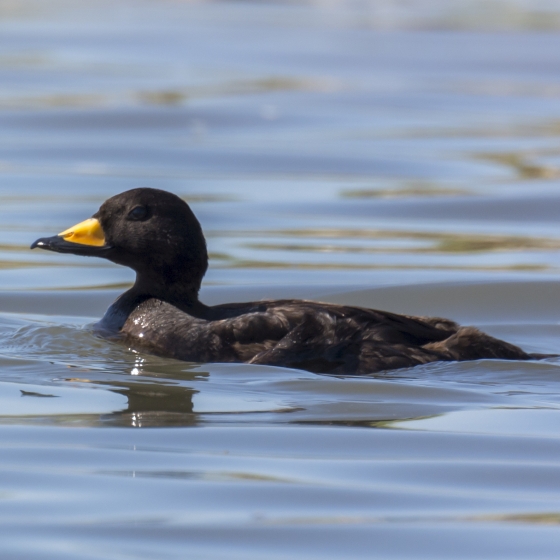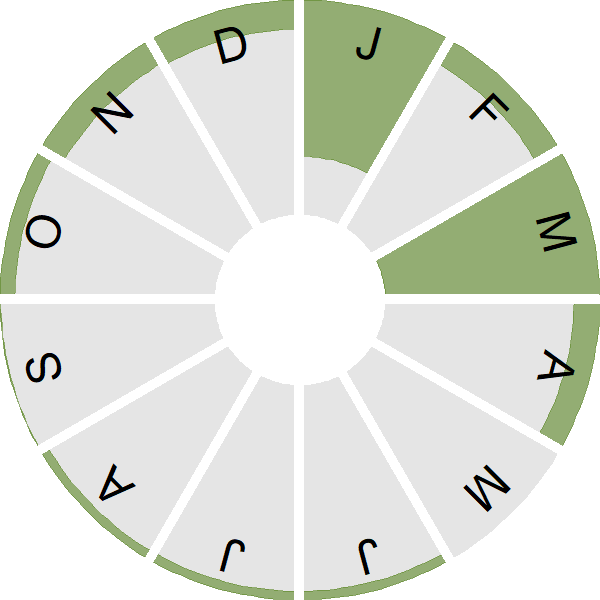Black Scoter

Introduction
The American equivalent of the Common Scoter, which it closely resembles. Taxonomists have only recently recognized this species, which is a very rare visitor to Britain.
Individuals occasionally do a "wing-flap" display while swimming, flapping their wings with the body held up and punctuating this with a downward thrust of head, as if its neck were momentarily broken.

Key Stats
Status and Trends
Conservation Status
Population Size
Population Change
Population trends of this scarce species are not routinely monitored.
Distribution
This species is a rare vagrant and was recorded during Bird Atlas 2007–11 as shown on the map.
or view it on Bird Atlas Mapstore.
Distribution Change
This vagrant is too rarely reported to map distribution change.
Seasonality
This species has been too rarely reported to BirdTrack during 2011–22 to properly assess seasonality.
Movement
Britain & Ireland movement
Biology
Survival and Longevity
Survival is shown as the proportion of birds surviving from one year to the next and is derived from bird ringing data. It can also be used to estimate how long birds typically live.
Classification, names and codes
Classification and Codes
- Order: Anseriformes
- Family: Anatidae
- Scientific name: Melanitta americana
- Authority: Swainson, 1832
- BTO 2-letter code: DX
- BTO 5-letter code: BLASC
- Euring code number: 2132
Alternate species names
- Catalan: ànec negre americà
- Danish: Amerikansk Sortand
- Dutch: Amerikaanse Zee-eend
- Estonian: ida-mustvaeras
- French: Macreuse à bec jaune
- German: Pazifiktrauerente
- Hungarian: nyerges réce
- Italian: Orchetto marino americano
- Latvian: Amerikas melna pile
- Lithuanian: amerikine juodoji antis
- Norwegian: Amerikasvartand
- Polish: markaczka amerykanska
- Slovak: turpan americký
- Spanish: Negrón americano
- Swedish: amerikansk sjöorre
- Welsh: Môr-hwyaden America

